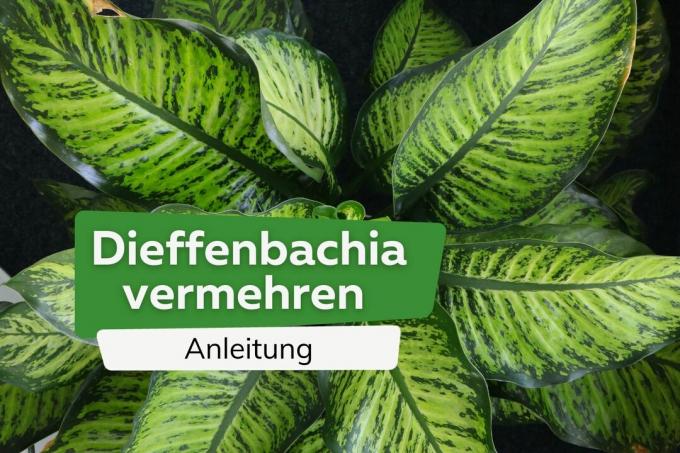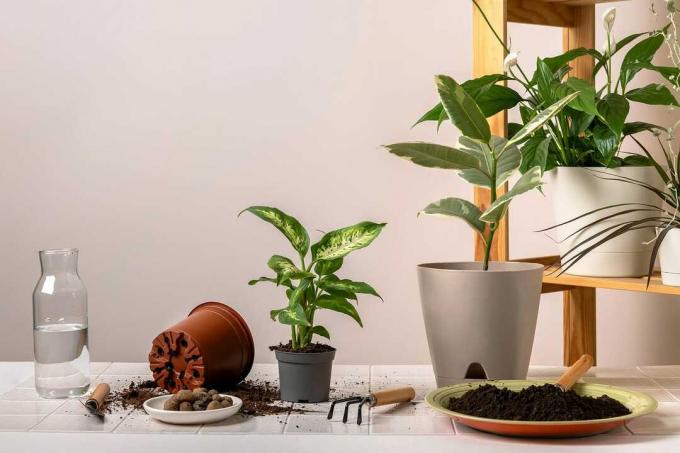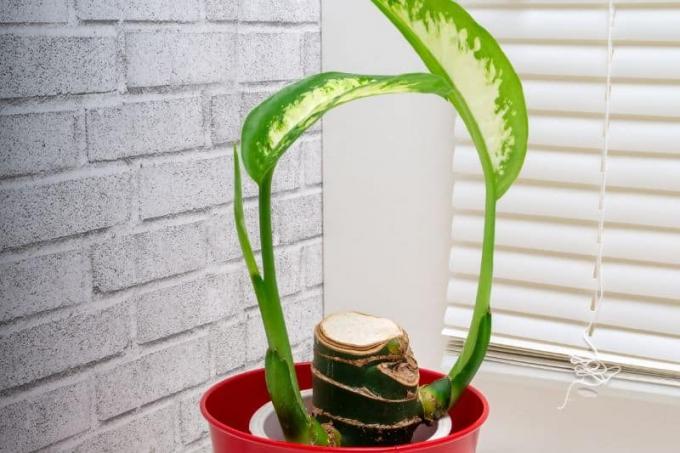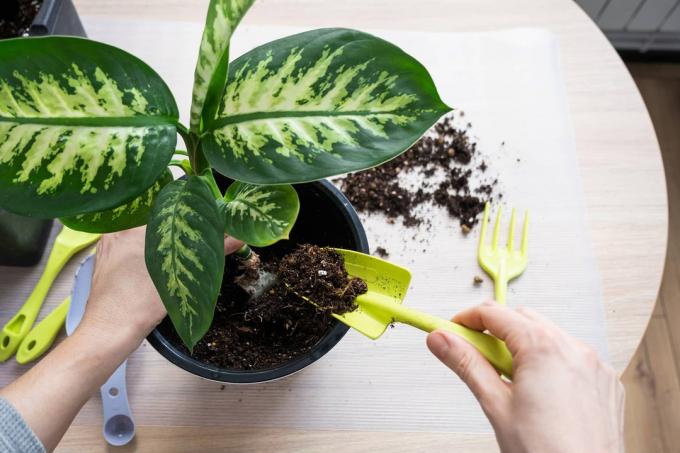
The Dieffenbachia is one of the most popular green plants for the home; it is robust, easy to care for and easy to propagate. The best methods for this are presented here.
To the point
- Propagation methods: cuttings or daughter plants
- Root cuttings in water
- Planting directly is also possible
- Separate daughter plants from the mother plant and plant them in their own pots
Table of contents
- Propagation methods
- Head cuttings
- Alternative to rooting in water
- Stem cuttings
- daughter plants
- frequently asked Questions
Propagation methods
| Head cuttings | Stem cutting | Kindel |
|---|---|---|
| A shoot tip of the plant is used for this. | Instead of the tip of the shoot, a middle section of a shoot is used. | If the plant forms daughter plants, this is the easiest way to propagate Dieffenbachia. |

Our tip: An increase in the Dieffenbachia It makes sense immediately after cutting back the old plant if there is enough plant material available.
Head cuttings
Depending on how many young plants are desired, the appropriate number of shoot tips are cut directly from the plant. The plant should be strong and healthy. Sick plants are not suitable for propagation. In addition, the shoots must not be too young and therefore too soft. They then root much more poorly or not at all. That's why summer is the best time to propagate Dieffenbachia (Dieffenbachia seguine).
All but three leaves are removed from the shoot tips. The further procedure:
- Place shoots in a glass of water
- Change water every two days
- wait for roots to form
- Be sure to remove rotting shoots
Once the first roots have formed, you can put the shoots in a pot potting soil plant. Moisten the substrate regularly and choose a location with high humidity. Alternatively, you can also put foil over the young plants. But don't forget to ventilate daily to prevent mold.
Alternative to rooting in water
Although rooting in water is more promising, the dieffenchia can also form new roots without water. To do this, you should stick the cuttings directly into moist potting soil. The cutting must be allowed to dry out a little beforehand Mold formation to avoid. Then dip the shoot in rooting powder. Existing leaves are cut back slightly to limit evaporation. Then pull a film over the cuttings to prevent them from drying out. You can tell whether the cuttings are forming roots by the new shoots that should appear after some time.
Our tip: There's one for rooting high humidity is necessary, an indoor greenhouse is ideal for rooting cuttings in substrate.
Stem cuttings
The most important difference from head cuttings is that stem cuttings consist of a piece of the plant's trunk. This has the advantage that the cutting is more robust. However, rooting takes longer. In the simplest version, a piece of Dieffenbachia stem is placed in a glass of water. Normally, after some time, roots will form on each section of the trunk. Then the trunk just needs to be cut into pieces. Each section is then planted individually. Similar to head cuttings, stem cuttings can also be rooted in soil:
- Fill a shallow bowl with potting soil
- moisten thoroughly
- Divide the trunk into smaller pieces, each with a node
- Dip the bottom end in rooting powder
- Insert into the ground at a slight angle
- press something
- Pull foil over the bowl and ventilate daily
- do not place in the sun

daughter plants
If you repot the Dieffenbachia in spring, it is the right time to separate young plants from the mother plant and place them in their own pots. Proceed as follows:
- Remove the mother plant from its pot
- remove old substrate from the roots
- Loosen the rootstock a little
- Do this carefully so as to injure the roots as little as possible
- Separate young plants from the mother plant, using a knife if necessary
- Preserve as many roots as possible on the young plant
- Place the young plant in a pot with potting soil
- Press the soil well and water

frequently asked Questions
One sheet alone is often not enough. It doesn't have enough strength to form new roots. However, you can still try and place the leaf in a glass of water. With a bit of luck, roots will form.
While potting soil is the best substrate for young plants because it promotes root growth, normal houseplant soil is sufficient for older dieffenbachias.
The plant should be placed in a bright but not sunny location. This protects them from drying out. In addition, the substrate should always be kept evenly moist so that waterlogging cannot damage the roots. Fertilization is only carried out when the plant has become a little stronger.



